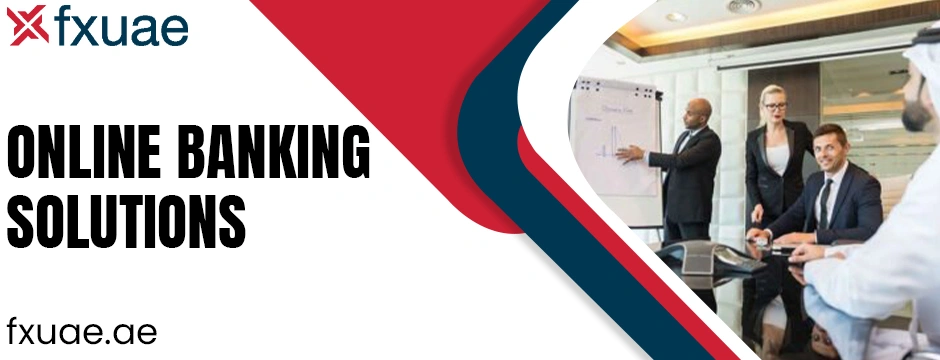Security Features to Look for in Online Business Banking Solutions
These days, managing finances online is something everyone has gotten used to; it has become a norm for most businesses that need to automate their operations to be faster and more agile. Online business banking indeed offers speed, convenience, and only access in real-time to critical financial data, but keep in mind that it can expose banking to cyber crimes and fraud if not properly set up. Cyber threats such as phishing scams and ransomware attacks continue to evolve with time, and organizations must ensure that their banking platforms are prepared to resist these threats.
Moving to a secure online banking is a good decision. All businesses and startups doing their first time transacting should secure themselves, just as established corporations safeguard their complex payrolls and vendor payments, using a proper security feature to secure their money and other information and reputation. But what exactly should you look for in a secure online banking platform? It is much more than just having a password and a firewall. It is about a multi-layered defence system that includes authentication, encryption, activity monitoring, and beyond. In this blog, we will take you through all of the essential security features for Online Business Banking Solutions, which every business should demand from its banking partner.
Two-Factor or Multi-Factor Authentication (2fa/MFA)
Two-Factor Authentication (2fa) or Multi-Factor Authentication (MFA) is one of the most fundamental features for the protection of online accounts. The authentication mentioned above requires at least two verification factors to access the account, including a password, one-time code sent to a mobile phone, etc. This makes access much harder and reduces the chances of unauthorized access to the best place for business bank account, even when login credentials are compromised.
Why it matters for business: Employees tend to exchange passwords across different platforms, and MFA protects sensitive business financial data, which probably has poor password hygiene.

End-to-End Encryption
Encryption ensures that when information is passing from your browser to the banking server, it is jumbled such that only relevant persons can decrypt it. But E2EE goes a step further by securing the data at all three stages—in transit, in use, and at rest.
Important to note: Banks must have SSL encryption of a minimum of 256 bits, and URLs should reflect HTTPS, with a valid security certificate.
Role-Based Access Control (RBAC)
Not everyone in the company can have access to the same business financial information. Thus, administering RBAC implies granting permission to managers and administrators based on their job descriptions.
Example: An accountant might be able to access payroll and invoicing, whereas a marketing executive is not. RBAC, therefore, decreases internal fraud acts and reduces external errors.
Real-Time Transaction Alerts
Transaction alerts reaching you via SMS, email, or push notifications provide you with real-time information on activities concerning your account. These alerts become your first responders because they set off an alarm with every suspicious activity.
Why does this help? This means that should anyone try to withdraw or even change details of the account without your authorization, you can act right away.
Secure API Integration
Most companies still require the use of third-party accounting, payroll, or bookkeeping systems linked with bank accounts. A secure environment for Online Business Banking Solutions will ensure that APIs (Application Programming Interfaces) are fortified against unauthorized access and data leakage.
Tip: Ask your bank provider about their API security policies-their encryption standards, and access control.
Device and Location Recognition

Advanced online banking solutions can recognize trusted devices and locations for logging in to the account. If an account is being accessed from an unfamiliar device or location, additional verification steps can be triggered, or the login attempt may be blocked.
Why this matters: This type of contextual intelligence limits access from unknown sources that are typically indicators of cyber threats.
Fraud Detection and AI-Powered Monitoring
Today, most banks are employing artificial intelligence and machine learning to evaluate transaction trends and produce alerts for deviations in instant alerting. Such systems can identify suspicious transactions, for example, transferring large amounts at odd hours. They can stop the transaction from going through or raise an alarm to the administrator.
Key advantage: By detecting potential threats early, any cyberattack can be halted before causing any damage.
End Notes
Securing your business finances isn’t just about protecting money—it’s about safeguarding your company’s future. With the growing sophistication of cybercrime, the banking solution you choose should go beyond the basics. From multi-factor authentication to AI-driven fraud detection, modern business banking platforms must be equipped with robust, multi-layered security measures.
If you’re looking for a trusted partner to help you set up a secure Online Business Banking Solutions, look no further than FXUAE. Our platform is designed with business security at its core, offering advanced protection features, dedicated support, and seamless onboarding to meet your unique needs. Explore our solutions today and take the first step toward smarter, safer business banking.



